Janine Jackson interviewed the African American Policy Forum’s Kevin Minofu about Say Her Name for the July 21, 2023, episode of CounterSpin. This is a lightly edited transcript.
CounterSpin230721Minofu.mp3
Janine Jackson: Like most powerful exercises, it’s a simple one. Professor and legal scholar Kimberlé Crenshaw asks audience members to stand as she lists names of Black people killed by law enforcement in this country, and to sit when they hear a name that they don’t recognize.

(Haymarket Books, 2023)
For Eric Garner, George Floyd, Michael Brown, most of the crowd—whatever crowd it is, students, academics, the general public—stay standing. But when it gets to Sandra Bland, Atatiana Jefferson, it thins and thins. And by the time it gets to Rekia Boyd and Michelle Cusseaux, generally everyone is seated.
Is that because Black women’s deaths via the same state-sanctioned violence that kills Black boys and men are less compelling? Are the victims less worthy? Or do they somehow not matter?
It’s hard to tease out and to talk about what’s happening. But if we genuinely want to address racist police violence, and bring all of us into the imagined future, we have to have the conversation.
The Say Her Name project from the African American Policy Forum, on whose board I serve, has worked to lift up the names of women, trans women and girls killed by law enforcement on and off duty, and to talk about how their murders are the same as, and different from, police murders of Black men and boys.
That project is now reflected in a book, Say Her Name: Black Women’s Stories of Police Violence and Public Silence, out this week from Haymarket Books.
Joining us now is Kevin Minofu, senior researcher and writing fellow at the African American Policy Forum. He joins us now by phone. Welcome to CounterSpin, Kevin Minofu.
Kevin Minofu: Hi, Janine. It’s a pleasure to be on. I’m very grateful for you making the time and, yeah, great to be on the show.
JJ: Absolutely. Well, as you and I both know, the Say Her Name project encompasses activism, art, research and writing, and support for families. But the heart of it, the radiating center, is still this really simple thing: “Say her name.” Why is that so meaningful?
KM: I think in describing that, it’s kind of useful to go back to the origins of the movement, because people are always interested in how it developed. People have probably heard about it, but oftentimes may be confused about its history.
And so Say Her Name developed around December 2014, during the protests that were ignited in New York City after the acquittal of the police officer who had killed Eric Garner, at the march where thousands of protesters from across the country of all ages and all races joined together and were standing up against police violence against Black people, and mentioning the names of men who had been killed by police violence.
In the context of that protest, the African American Policy Forum were, at the protest, trying to uplift the names of women who had been killed by police violence. And so in the process of being part of that activity, we were saying the names of these women, saying their names out loud, and looking at the looks of lack of recognition, of confusion, from the other participants at this protest.
And I think that was emblematic of the erasure of these stories, and the ways in which by saying the names of these women, we were speaking them into existence in people’s minds, into people’s memories, and making them understand a problem that up until then they hadn’t been able to see.
JJ: There’s a thing that we talk about, the loss of the loss, which is, there’s a horror that happens, obviously, when somebody is killed by police, and where you understand that it’s emblematic of the worthlessness of Black lives, in terms of law enforcement in this country.
But when it’s a Black woman or a trans woman or a girl, and then it doesn’t get acknowledged, there’s a deeper level of loss there. And that’s kind of what this project is about.

Kevin Minofu: “Not a lot of people would understand that Black women are often killed by the police when they actually ask for help.”
KM: Exactly. As we’ve always described it, there’s the immense loss of what it means for a person to lose a daughter, a mother, a sister, a friend, in their families. These are women who all had incredibly full lives, lots of them had children, were all loved by family members and their communities. So there’s that loss that everyone who’s been through grief or has lost someone unexpectedly will suffer.
And I think that loss is exacerbated by the fact that these are women who are killed by the same institutions that are designed to protect them. So the police officers that we entrust with the safety of our communities and in our neighborhoods and in our cities are the people who are responsible for taking away these lives.
And then once we understand that loss, there’s the secondary loss that the family members are burdened with, which is the loss of their loss. Their loss is not legible to people. People don’t recognize that this is something which is a tragedy. People don’t recognize that that’s something which is a problem.
People don’t recognize the injustice of being killed if you are, in the case of one of the women, Miriam Carey, who was killed while driving with her 18-month-old child by the Secret Service in front of the White House. If you were killed like India Kager, who was also driving with her son in Virginia Beach, and killed in a hail of bullets. If you were killed in the context of your own home, over what was an outstanding traffic violation, like Korryn Gaines.
So an inability for the general public to see the horror of these deaths, and the loss that those deaths mean for the family members that survive, is what we like to term the loss of the loss, and why this book is such a big intervention to try and publicize and get that loss into the public’s attention.
JJ: And to inform the conversation about state-sanctioned police violence against Black people.
But I just want to say, let me just intercede early: I want us to dispense early with the idea that Say Her Name is somehow an invidious project. And I think some listeners might be surprised to hear, but we know that this project has been met with the idea that if you are uplifting the names of Black women and girls who have been killed by police, that somehow that means you don’t think it matters that Black men and boys have been killed by police.
But I will say, having done a lot of looking into media coverage of the issue, very early on, we absolutely saw the question of state-sanctioned police violence as a question about police killing Black men and boys.
And to the extent that women were in the conversation, they were mothers and wives and sisters of Black men who were the victims of state violence. And so let’s just address the fact that this is not about saying that Black men and boys are not also [affected].
KM: I think that’s a very vital thing to add. Thanks for making that, Janine, because the whole impetus of this campaign is stating that we need to expand the scope of our politics, not just replace the names that we include. So we’re not just replacing Black women and Black men in the conversation, but understanding that we need to have a gender-inclusive understanding of police violence.
So of course we know that, across racial groups, that men are killed more often, Black men are killed more than any other race and gender group. But we do know that Black women represent about 10% of the female population in the United States, yet account for one-fifth of all women killed by the police. And more so, research suggests that three out of five Black women who are killed by police are unarmed.
So there’s a particular vulnerability to being a Black woman that exacerbates the chance of being in a deadly and a lethal police encounter that other women don’t face, and even a lot of men don’t face as well.
So being able to speak about that is able to make us understand how we should be able to hold the death of George Floyd in conversation with the death of Breonna Taylor, which happened only a couple months before George Floyd was killed. So that is the point and impetus of our project.
JJ: And also, a problem that is not named is not studied, is not addressed, and then it’s easier for people to say it’s not really a problem, because we don’t have any data on it. So part of this is just to actually collect some numbers and to say this is happening.
KM: Absolutely. The kind of driving mantra of our work, and our broader work of the Policy Forum, is that we can’t fix the problem that we can’t see, that we can’t name.
And so maybe to give a bit of background, this book is building on work that we did in 2015, which was the inception of our Say Her Name report.
The Say Her Name report then looked at the ways in which Black women were killed. So, for example, driving while Black is something that we have a context for and understanding for, from looking at the history of how people commonly understand police violence.
But looking at, for example, how often Black women who are in a mental health crisis are killed, that expanded the scope of how we understood police violence, because not a lot of people would understand that Black women are often killed by the police when they actually ask for help.
So giving ourselves these frames for understanding the ways in which this problem occurs, both gave us a comparison to link it back to the ways in which we commonly understand it, and also expanded the scope for how we want to respond to the crisis.
JJ: Yeah, absolutely. There is a narrative, which maybe some listeners are not privy to or don’t understand, but there is a dominant narrative in which Black men who are killed by police are victims of state violence, but Black women who are killed, eh, what did they do to get themselves killed?
And so introducing both the mental health vector, but just, there’s meaning in saying that it’s both the same—racist police violence is similar—and then there are also distinctions. And if we don’t pay attention to them, then we can’t address them.
KM: I think part of that work has been, there’s a policy intervention that is required, of course, there’s legislation both across the country and in certain states that needs to be effected to change this, but a big part of this is also just a narrative shift.
So it’s how the media report on the ways in which Black women are killed, or decline to report on them at all. And I think the Breonna Taylor example is indicative of that. The fact that Breonna Taylor was killed in March, and very little was made of the fact at the time, on a national scale, and then a few months later, that’s when her name joined that conversation.
The fact that Tanisha Anderson was killed only a few days before Tamir Rice was killed by the same police department.
The ways in which the media can, frankly, just do their job better, to make sure that we have a more capacious and broader frame of police violence, and are able to tell the stories of these women in a way that doesn’t show deference to the narratives that emanate from police sources, and shows the full beauty of their lives.
JJ: So important. To come back to the book, specifically, this book is not just a book. It’s meant to be a tool. It’s not meant to just sit on a shelf.
And Fran Garrett, who is the mother of Michelle Cusseaux, who was killed by law enforcement, she talks in the book about how things are actually different based on the work around Say Her Name, and how the mental health response in her community, which happens to be Phoenix, Arizona, but now mental health wellness orders are handled differently, and it’s not necessarily law enforcement that comes first to your door.
So the book is a way of also encouraging action. It’s not just documentation of sad things; it’s about how to make things different.
KM: Absolutely. At the heart of the book—and I would encourage all your listeners to go out and get it at a bookstore near you, and online—at the heart of the book is the Say Her Name Mothers Network. The Say Her Name Mothers Network was formed not long after the inception of the Say Her Name movement, and it represents mothers, daughters, sisters, family members who have lost women to police violence.
And that community has existed, and has existed as a source of advocacy, a source of community. It’s connected them to women across the country, from Virginia to California, from New York to Texas.
It shows that there is a community out there, and through this community, and then particularly through storytelling, artivism, using art to disrupt popular narratives, we released a song with Janelle Monáe, who also wrote the forward for the book, called “Say Her Name (Hell You Talmbout).”
And that’s designed to just—all of these narrative interventions are the seeds for what becomes policy and actually becomes change. It’s a historical project that Black people have been doing in this country since our arrival. And it’s the Black feminist legacy that brings this book into fruition.
JJ: And then, just on media, I think some listeners might think, well, media are covering police violence against Black women, and what they might be thinking about is these terrible, wrenching videos, or these just horrible images of Black women being abused by law enforcement.
And we want to be careful about this, because I think for a lot of people, that might look like witnessing, that might look like seeing what’s happening, but that can’t be the end of the story.
And certainly for journalists, the responsibility of reporters—but also for all of us—is to not just look at it, but to do something about it. And I wonder if you were talking to reporters or thinking about journalism generally, what would be your thoughts about what would be actually righteous response to what’s happening?
KM: Yeah, absolutely. I think that, of course, we live in an age of spectacle, and there is still a great spectacle to Black suffering. And the visibility of that, that has increased with the internet and social media, has been important in being able to document abuses and violence across the country.
But the story can’t end there. It can’t end there, just that particular moment. If this was a camera shot, the camera needs to be expanded to look at the dynamics of the communities, the relationship between police forces and these communities, and the patriarchal relationship between the male police officers and women, the racialized relationship between a police force which has been designed to serve white interests and Black communities.
And so to do the vital work of understanding what led to that situation, what led to the Black girl being violently dragged out of a classroom, or beaten for swimming, or killed in a part of the misguided war on drugs. To understand that broader story is the vital work of journalism that we need at the moment, and the vital work that is actually going to save lives.
JJ: Do you have any final thoughts, Kevin Minofu, about this importance and the place of this intervention in the public media conversation about Say Her Name, and about police violence against Black women?
KM: The Say Her Name book, as I said, features different interviews with members of the Say Her Name Network. And so just hearing those stories and actually getting behind a news story and learning about the lives that should have been is really important for everyone to be able to contextualize and humanize the women that form part of the network and this broader movement.
And looking at the ways in which the knowledge that is being lifted up here is vital to us understanding racism, sexism, and at the same time, being cognizant of the fact that that is the precise knowledge which at the moment a backlash to what is termed wokeness across the country is attempting to erase.
I can imagine that the content of the Say Her Name book would inflame the sensitivities of various conservatives and right-wing people that are attempting to silence our ability to speak about our circumstances, because they don’t want us to change it.
So in this context of that environment, reading this book, sharing it with your communities, letting people know about the problem, letting people know that to truly respond to structural racism, to racial injustice, we have to have a gender-expansive, gender-inclusive understanding of it…. I think that’s the work, that’s the mission of Say Her Name.
And we’ve been very grateful to be supported by the public so far. We’ve seen the movement grow, but there’s still so much work to be done, and that’s the work that we’re excited to continue.
JJ: We’ve been speaking with Kevin Minofu, senior research and writing fellow at the African American Policy Forum. You can learn more about this work on the website AAPF.org. Thank you so much, Kevin Minofu, for joining us this week on CounterSpin.
KM: Thanks, Janine.
The post ‘We Need a Gender-Inclusive Understanding of Police Violence’ appeared first on FAIR.
This post was originally published on FAIR.
 As the Democrats headed toward their convention with momentum for the Kamala Harris and Tim Walz ticket, newspapers have collectively found an August scandal. Major press outlets are amplifying Republican claims that Walz, as governor of Minnesota, let the Twin Cities burn during the 2020 George Floyd uprising. By spotlighting these charges, corporate media are assisting GOP attempts to portray themselves as the party of law and order against a tide of anarchic anti-police chaos.
As the Democrats headed toward their convention with momentum for the Kamala Harris and Tim Walz ticket, newspapers have collectively found an August scandal. Major press outlets are amplifying Republican claims that Walz, as governor of Minnesota, let the Twin Cities burn during the 2020 George Floyd uprising. By spotlighting these charges, corporate media are assisting GOP attempts to portray themselves as the party of law and order against a tide of anarchic anti-police chaos.










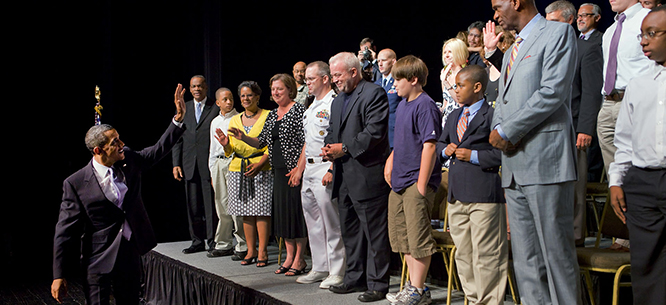







 as if it were life support.
as if it were life support.
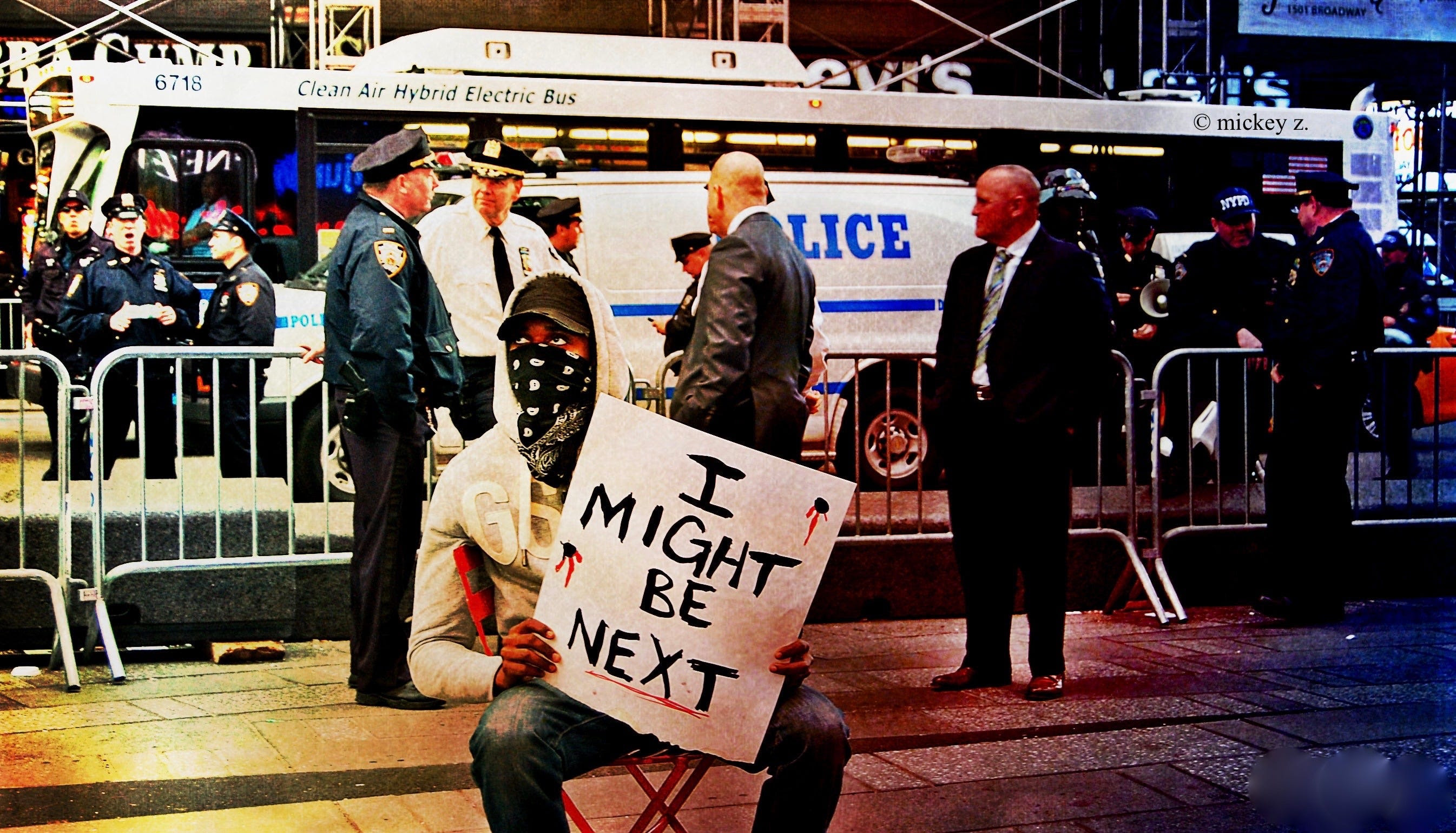
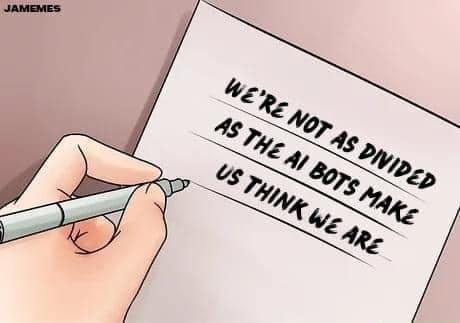








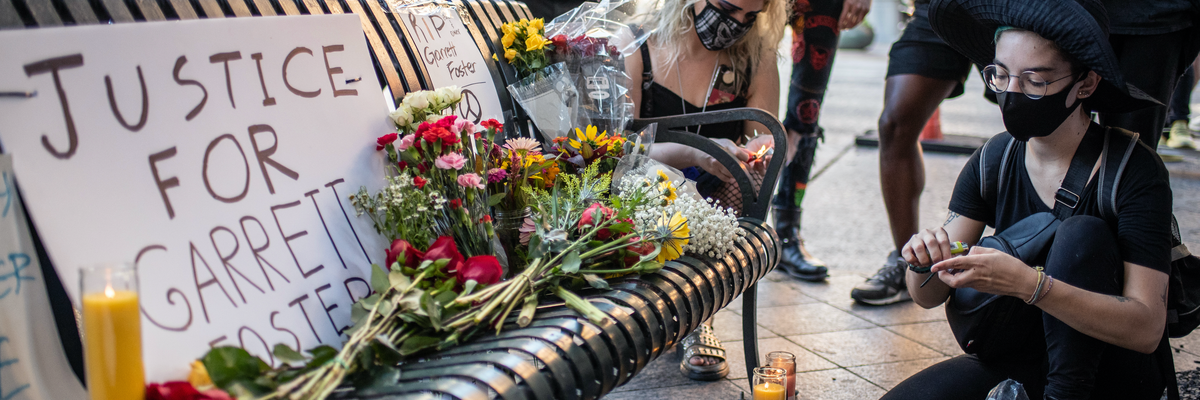
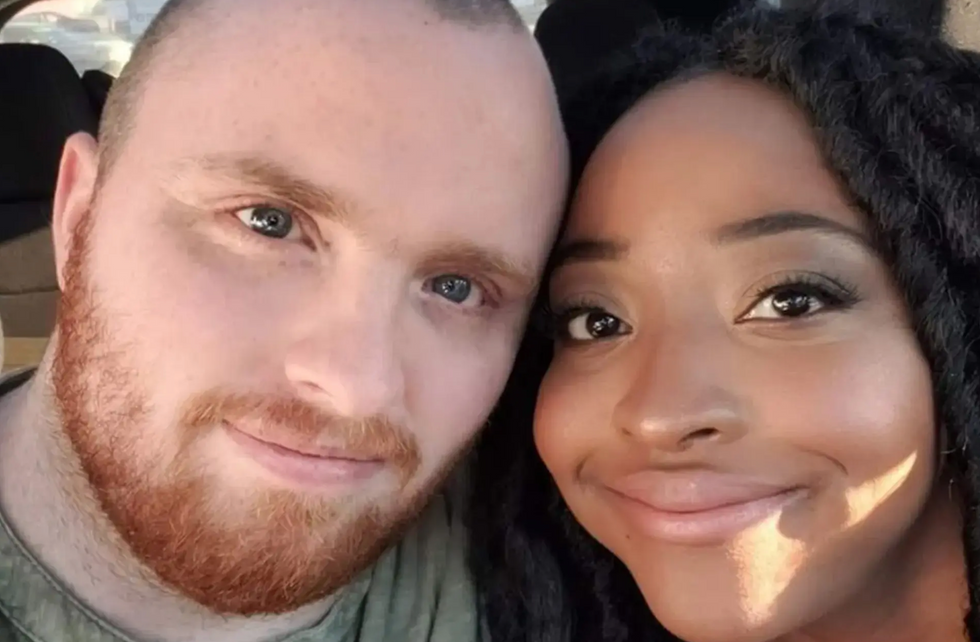 Garrett Foster is seen here with his fiancée Whitney Mitchell, who was present when Foster was murdered. (Photo: Garrett Foster/Facebook)
Garrett Foster is seen here with his fiancée Whitney Mitchell, who was present when Foster was murdered. (Photo: Garrett Foster/Facebook)